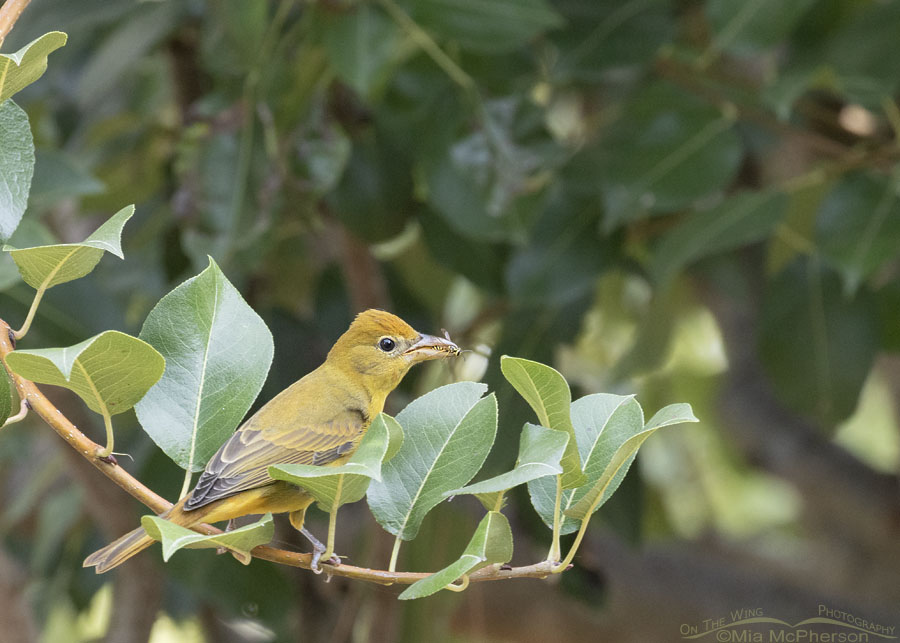I was about to give up on bird photography for the morning yesterday when a gorgeous immature Summer Tanager flew in and landed in a pear tree.
 Immature Summer Tanager in a pear tree – Canon R7, handheld, f7.1, 1/160, ISO 1600, +0.3 EV, Canon 100-400mm at 400mm, natural light
Immature Summer Tanager in a pear tree – Canon R7, handheld, f7.1, 1/160, ISO 1600, +0.3 EV, Canon 100-400mm at 400mm, natural light
I quickly stood up, moved across the deck, adjusted my camera settings, and took a few images before the tanager flew away.
The tanager had a yellowjacket in her or his bill—this species does like to eat things that can sting. I wonder if they ever get stung.
Summer Tanagers aren’t a lifer for me, but they are still a nemesis bird. This photo is actually the first Summer Tanager image I’ve taken that meets my standards and that I like.
I’ve taken photos where most of the Summer Tanager was covered by something, too far away, perched too high, or simply ended up with butt shots—until yesterday.
Now, I hope to take more images of these tanagers before they migrate out of the area!
 Immature Summer Tanager in a pear tree – Inset – Canon R7, handheld, f7.1, 1/160, ISO 1600, +0.3 EV, Canon 100-400mm at 400mm, natural light
Immature Summer Tanager in a pear tree – Inset – Canon R7, handheld, f7.1, 1/160, ISO 1600, +0.3 EV, Canon 100-400mm at 400mm, natural light
The inset in the image above shows a fleshy gape which is why I believe this is an immature Summer Tanager.
There is just a spot of orange-colored feathers on the lower cheek of this tanager, which could indicate that it is a young male, or the bird may have eaten a berry that stained those feathers.
I wouldn’t even hazard a guess as to the bird’s gender—I don’t have enough information or advanced knowledge about this species to determine whether it is a she or a he.
So let me leave you with this description of this particular tanager: a bright yellowish bird that looks like a highlighter with wings and munches on stinging bugs and juicy berries like it’s at an all-you-can-eat buffet.
Life is good.
Mia
Click here to see more of my bird photos in their galleries.


Good for the Tanager! I’ve taken a few hits from yellow jackets over the years and they deserve to get eaten. Cool pics; especially the close-up. Thanks Mia.
It should of course be a partridge in a pear tree – but this is a more than acceptable substitute. I wonder why they like stinging insects?
Sich a beauty Mia, I have never seen this species before! Love your final description, it is so you…
I think they are a very pretty colorful bird. Glad you spotted him and got a couple of nice pictures. Are Summer Tanager and Western Tanger two different types of birds?